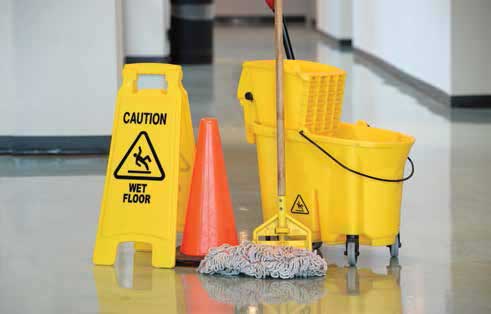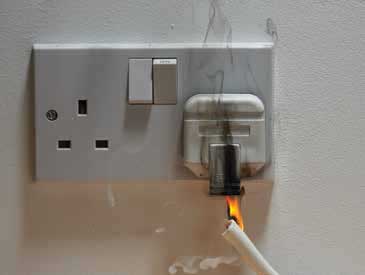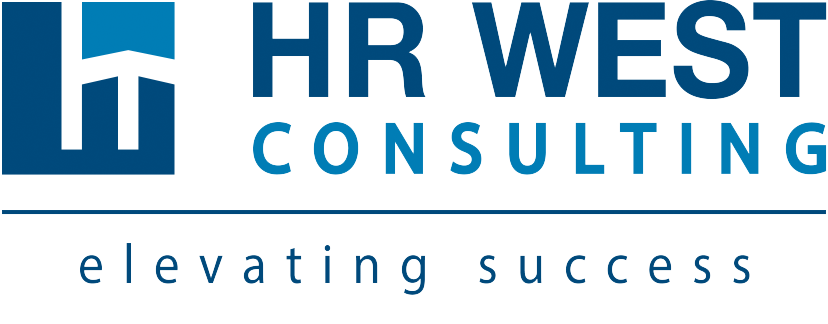The following article was originally published in The Publican magazine, Spring 2018 Edition. See it online at:http://www.emcmarketing.com/sites/emcmarketing.com/files/file_upload/Publican/2018/The_Publican_Spring_2018.pdf
by Dorothy McEwan
A safe workplace is a great workplace—the adage is enduring for a reason. Creating and maintaining strong health and safety programs shouldn’t just be about compliance with governing bodies; employers should strive to be leaders in the protection of their employees. When done right, these programs offer a wide range of benefits to the employer such as preventing injury and disease, controlling and identifying hazards, limiting the financial losses resulting from injury and disease, and much more. Most importantly, it indicates to employees that you care about them.
Planning

The easiest way to stay accountable in promoting a safe workplace is to create a plan. Establishing a calendar of safety topics is one way employers have found to be effective. One topic a month is plenty. These topics should be around what is pertinent in your field. It’s a great way to keep yourself and your team accountable and avoid being reactive; prevention is much easier (and less costly) than the alternative. It also helps ensure that mandatory topics—like workplace bullying and harassment— are addressed every year. If you know ahead of time that in June you will be discussing working alone, you can prepare materials, training, and discussion points ahead of time.
Trust & Communication
One of the most important ways to create a strong safety culture is encouraging all workers to be a part of ensuring a safe workplace. Your workers can be your eyes and ears on the frontline to report health and safety concerns, solutions, and suggestions for improvement. They should feel they can bring forward concerns and not be penalized for it. If every worker feels her voice is heard, it will help build your team morale, promote job satisfaction, and encourage trust. You can enhance that trust when you actively listen and address safety concerns in a timely manner.
Employers should remember that safety isn’t just a once a month event, you should consistently communicate with your workers about health and safety. Discussing current trends, recent injuries or close calls, reviewing safety protocols, and asking workers what they see as hazards are a great way to have a quick check in. Something as simple as a positive reminder about lifting safely, just before someone is about to start receiving your latest delivery, will reemphasize that you care about your employees and their wellbeing.
Your workers can be your eyes and ears on the frontline to report health and safety concerns, solutions, and suggestions for improvement.

Don’t worry about running out of safety materials. Review the materials available through WorkSafeBC and go2HR. They are terrific resources to get expert safety advice and tips at little to no cost. WorkSafeBC has a huge data bank of posters, training, and topics that will help you start the discussion about key areas in your industry. Encourage your employees to participate in the discussion and ask for their suggestions or even ask them to make a small presentation. Employers don’t always have to be leaders of health and safety programs. Encouraging workers to be safety ambassadors and leaders gives employers the ability to take a small step back and watch their programs grow.
Worksite Inspections
Workplace inspections are a perfect opportunity to identify hazards and assess risks in your workplace on an ongoing basis. They help you understand the current state of your workplace, observe how your staff work, and prevent unsafe working conditions from developing. The first step is to develop a thorough checklist that will become your basis for all inspections moving forward. Things to look for and check off could include properly labeled emergency exits and emergency plans, outdated fire and emergency equipment, proper storage of materials (anchored shelves, MSDS binders, etc.), liquid or grease on floors, missing wet floor signs, lack of visibility through swinging doors, and poor maintenance of equipment.
With your checklist ready, start your inspection; doing the inspection with a worker gives you an extra set of eyes and a different perspective. Focus on both the physical environment and your employees’ behaviours. Even if you are in the workplace every day, treat each inspection as though you are seeing things as an outsider for the first time. During the inspection you should be identifying unsafe conditions and activities that may cause injury or illness, so you can take corrective measures. Ask yourself what hazards are associated with the job that you are observing or that would be performed in that work area. Ask your workers how they perform their tasks and about what concerns they have. Make records of any unsafe actions or conditions that you observe and consider tasks that the worker may also perform that you did not observe.
Remember to look deeper into issues than what is just visible on the surface. If you see oil on the ground, ask why it is there, not why hasn’t it been cleaned up. Taking this approach can help reveal broken equipment, a lack of training, or improper job processes.
After the inspection, remedy serious hazards or unsafe work practices immediately, as it is a legal obligation. For example, if you find that a ladder has a loose or damaged rung, immediately remove the ladder from service and repair or replace it. Once you have remedied the serious hazards begin to prioritize lesser hazards. Create a plan, timeline, and remedy for each hazard listed. Assign this task to a worker and document once it is completed. It is also very important to follow up on your remedies to ensure the actions taken are appropriate, communicate the findings and corrections to workers, and forward the necessary information to your health and safety program members.
Get More Help
Your workers shouldn’t hesitate to reach out about health and safety concerns and neither should you! The Ministry of Labour’s Employer Advisors provide advice and assistance to employers (not workers) in BC in many areas of health and safety. An Employers Advisor can:
- Help navigate the safety regulations governing your business activities.
- Explain safety obligations for your workers and your workplace.
- Describe due diligence and how you can achieve it.
The Employer Advisors Office is independent from WorkSafeBC and can also help you with disputing a WorkSafeBC claim, management of the claim, and appealing a decision made by WorkSafeBC. These services are also at no cost to the employer.
Everyone Wants to Help
Safety is a unique area where getting help is relatively easy. Everyone can easily agree that we do not want a fellow human being injured or worse. Resources are readily available and most are free. Even small steps in health and safety pay multiple dividends: reduced costs and increased employee morale being primary reasons that every employer will benefit from starting their program today!



